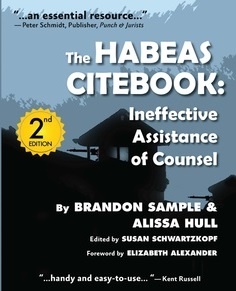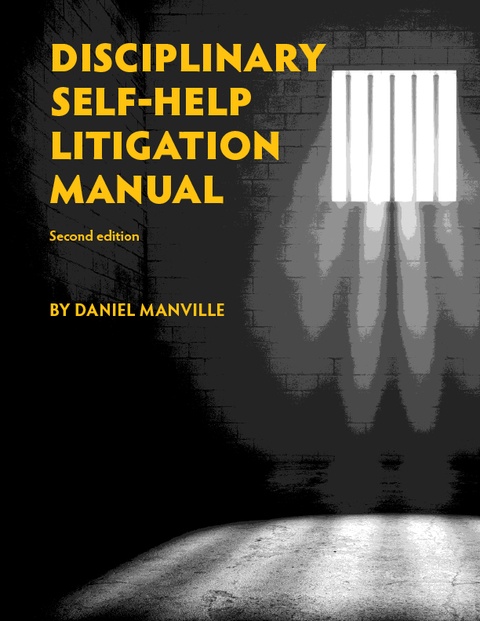South Carolina Supreme Court Announces Traditional Four-Element Standard for When Person Has Right to Use Deadly Force in Self-Defense Not Applicable to Non-Deadly Force Self-Defense Analysis
The Supreme Court of South Carolina held that the defendant was entitled to a self-defense jury instruction where he presented some evidence upon which a jury could reasonably conclude that he acted in self-defense and that it was error for the trial court to refuse to provide the requested jury instruction based on its belief (1) that the defendant’s response was not proportional because he was much larger than the alleged victim and (2) that the defendant had a duty to retreat but failed to do so. In making its determination, the Court clarified that the traditional four-element standard used to determine whether the use of deadly force in self-defense is justified does not necessarily apply in its entirety to the examination of whether the use of non-deadly force in self-defense is justified
Background
In October 2018, Jason Edwin Stoots picked up his estranged wife Kimberly and took her to the “drive-thru” at a nearby Taco Bell. Stoots testified that Kimberly began throwing her arms around, and hitting him while they were sitting in his van. Stoots stated he grabbed Kimberly’s arms and she was hit in the mouth with the back of his hand during the ensuing struggle. But Kimberly testified that she never touched Stoots, stating, “Not once in that van did I touch him before he hit me.” Dr. Christopher Curey testified that after the incident, Kimberly presented swelling and bruising to her face, a cut inner lip, and one of her upper teeth was displaced posteriorly.
The State charged Stoots with first-degree domestic violence. After the presentation of evidence during his trial, he requested a jury instruction on the law of self-defense. The trial court denied the request, explaining that it would not provide a self-defense jury instruction because of the size difference between Stoots and Kimberly and because Stoots “was in a better position to leave the altercation.”
The jury found Stoots guilty of the lesser-included offense of second-degree domestic violence. Stoots timely appealed the trial court’s decision not to provide a self-defense jury instruction. The Court of Appeals affirmed. The South Carolina Supreme Court granted certiorari to address the issue of whether Stoots was entitled to a self-defense jury instruction.
Analysis
The Court began its analysis by observing that it is well-settled law in South Carolina that “if there is any evidence from which a jury could reasonably conclude the defendant acted in self-defense, it is reversible error for the trial court to refuse to instruct the jury on the point.” State v. Slater, 644 S.E.2d 50 (S.C. 2007); State v. Muller, 316 S.E.2d 409 (S.C. 1984). In the present case, Stoots testified that he grabbed Kimberly’s arms in an effort to protect himself against her attack. Because Stoots presented some evidence that he acted in self-defense, the Court held that the trial court was required to provide a self-defense jury instruction.
The Court then addressed the State’s arguments and rationales by the lower courts for concluding that Stoots was not entitled to a self-defense jury instruction. The State argued that Stoots was not entitled to a self-defense instruction because he testified that he hit Kimberly with “no intent whatsoever.” Because the act of self-defense is an intentional act, the State contended that his claimed lack of intent negated his right to assert self-defense. The Court flatly rejected that argument. See State v. White, 821 S.E.2d 523 (S.C. Ct. App. 2018) (holding the trial court erred in refusing to charge self-defense even though the defendant testified he stabbed the victim unintentionally). The Court reiterated that if there is “any” evidence that the defendant acted in self-defense, the trial court is required to provide a self-defense jury instruction. It explained that it was for the jury to decide whether Stoots’ claimed lack of intent negated his right to self-defense, not the trial court.
The Court then turned to the “not proportional” rationale relied upon by both lower courts, i.e., the trial court rejected the requested jury instruction because Stoots’ response was not “proportional” since he was much larger than Kimberly, and the Court of Appeals determined that he used “excessive force” and cited to a proportionality case. The Court agreed that proportionality is a primary consideration in “all non-deadly force cases.” However, it explained that whether a defendant’s actions were proportional, “is almost always a jury question.” See State v. McGowan, 557 S.E.2d 657 (S.C. 2001). Whether Stoots’ response was proportional to the perceived threat was a question for the jury to decide. Thus, the Court concluded it was error for the lower courts to rely on proportionality in justifying the refusal to provide the requested jury instruction.
Finally, the Court addressed the Court of Appeals’ application of the “four traditional elements of self-defense” that courts use in analyzing whether a defendant was justified in using deadly force when fearing death or serious bodily injury. The Court noted that while elements for the use of deadly force in self-defense are “well-established,” the case law “dealing with a defendant responding with non-deadly force to a lesser degree of fear is much less developed.” [Writer’s note: The four traditional elements of the use of deadly force in self-defense in South Carolina are (1) without fault, (2) imminent danger, (3) reasonable belief, and (4) duty to retreat (prior to Stand Your Ground law enacted in 2006—S.C. Code Ann. § 16-11-440—which removed the duty to retreat in certain situations). See State v. Fuller, 377 S.E.2d 328 (S.C. 1989).]
Stoots argued that the elements of imminent danger and duty to retreat do not apply to non-deadly force situations or should be treated differently than deadly force cases. Consequently, he asserted that he was entitled to defend against Kimberly’s non-deadly attack even though he did not fear he was in imminent danger of serious bodily harm.
The Court declared that it agreed with Stoots’ argument, reasoning that “it makes little sense to require a person to believe serious bodily injury is imminent before resorting to non-deadly force in self-defense.” It explained that this conclusion is based on the principle of proportionality. The law requires a person to fear imminent serious bodily harm or death as a necessary condition for the justified use of deadly force in self-defense. However, where the attack is less serious and there is no fear of imminent serious bodily harm or death, the Court stated that “a person may still be justified in responding, but only with proportional force,” i.e., non-deadly force. Thus, the Court ruled that “there is no requirement the defendant anticipate serious bodily injury or death before responding with non-deadly force in self-defense.” See City of Gaffney v. Putnam, 15 S.E.2d 130 (S.C. 1941) (in a self-defense case where non-deadly force was used, “One acting in self-defense to repel an unlawful attack is not guilty of assault; he may repel force with force and continue his self-defense as long as the danger apparently continues”); see also William Shepard McAninch et al., The Criminal Law of South Carolina 541 (5th ed. 2007) (noting there are no South Carolina cases directly on point but a “thoughtful analysis reveals that … one need not anticipate serious bodily harm before responding with non-deadly force”).
The Court then addressed Stoots’ argument that there is no duty to retreat in non-deadly force self-defense situations. Although the Court rejected the trial court’s position that Stoots was required to abandon his vehicle to flee the perceived danger, it declined “to establish a bright-line rule about the duty to retreat in all situations involving non-deadly self-defense.” Instead, it instructed: “the law requires a person facing non-deadly force to act reasonably in deciding whether it is necessary to respond with defensive force instead of stepping back or otherwise avoiding engagement with the adversary.” Thus, the Court ruled that it was error for the trial court to conclude as a matter of law that Stoots was required to retreat from his vehicle in order to prevent him from being injured.
Conclusion
The Court held that the trial court erred by declining to provide a self-defense jury instruction. Accordingly, the Court reversed the judgment of the Court of Appeals and remanded to the trial court for a new trial. See: State v. Stoots, 912 S.E.2d 248 (S.C. 2025).
As a digital subscriber to Criminal Legal News, you can access full text and downloads for this and other premium content.
Already a subscriber? Login
Related legal case
State v. Stoots
| Year | 2025 |
|---|---|
| Cite | 912 S.E.2d 248 (S.C. 2025) |
| Level | State Supreme Court |





